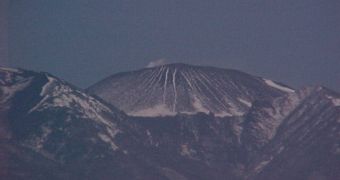Earlier today, Mount Asama, which watches over the Japanese capital of Tokyo, erupted, projecting a smoke column more than a mile high, and raining ash and other debris over parts of the city. The earliest reports coming from Japan say that there have been no immediate casualties or material damage reported. However, public safety officials are on alert, because there is a distinct possibility that the volcano might be getting ready for a larger blast, which could cause severe damage to humans and buildings.
On Sunday, the national Meteorological Agency (JMA) warned that the mountain could erupt sometime soon, as its scanners picked up an increased level of seismic activities within the area. However, it goes without saying that no one expected this to happen barely 24 hours after the announcement was made. Hopefully, this will serve as a warning for the people living around the Redoubt volcano in Alaska, who are also at risk of being affected by an eruption within days or weeks.
The Japanese capital is located some 90 miles (145 kilometers) away from Mount Asama, but officials from the JMA say that they have already found rock fragments some 3,300 feet (roughly 1 kilometer) away from the crater. The eruption occurred at 1.51am, on Monday morning, and the ash cloud that was formed traveled towards Tokyo very fast, as early TV news reports showed important parts of the city covered in what appeared to be small white flakes.
These substances are very dangerous to humans and animals, because they are very small and can easily be swallowed. When they accumulate in the lungs, they can cause these organs to clog, which leads to suffocation and death.
Such events are not uncommon for the city and for the country as a whole. The entire Pacific region where Japan is located is part of the large “Ring of Fire,” an area stretching thousands of miles across the Pacific Ocean, where large tectonic plates meet and collide with each other. The country alone has 108 volcanoes, which erupt regularly, and is also subject to a large number of tremors, which inevitably occur in areas where plates meet.

 14 DAY TRIAL //
14 DAY TRIAL //